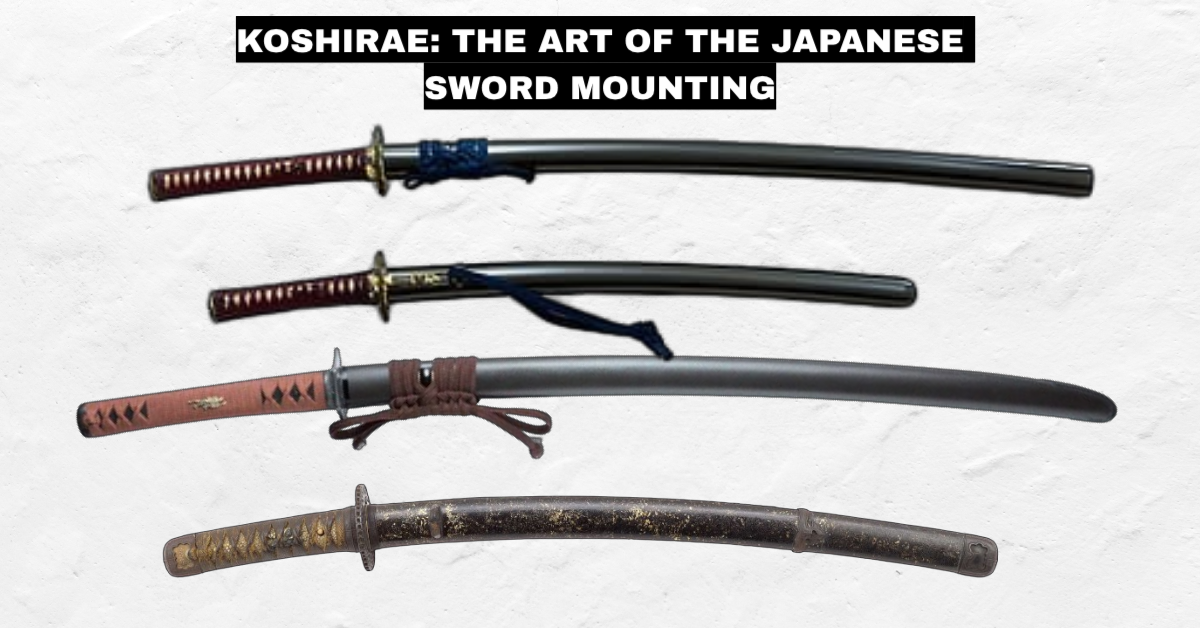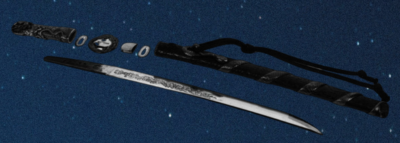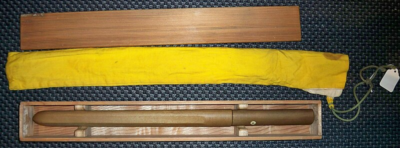Blog
Koshirae: The Art of the Japanese Sword Mounting

Historical Japanese swords were not just blades, but complete functional units called koshirae. These were customized for both practical use and ceremonies. Samurai swords in particular had koshirae that were constantly adapted to fit new rules, events, and even fashion! The analysis and admiration of sword mountings and fittings form a distinct discipline, separate from Japanese sword connoisseurship, which is primarily concerned with the blade itself.
Let’s delve into the various types of sword koshirae, their historical importance, and their evolution over time.
What Exactly Is a Koshirae?
A koshirae refers to the complete set of mountings and fittings for edged weapons. Koshirae extends beyond just sword mountings! This term, derived from the verb koshiraeru (to create, make, manufacture), can also be applied to the fittings of polearms like yari and naginata. Literally translating to “outfit” or the act of “making,” koshirae encompasses a broader range of mountings.
A sword koshirae includes the full set of the hilt (tsuka), handguard (tsuba), and lacquered scabbard (saya). Typically, removing just one pin allows for the entire sword hilt to be replaced. This contrasts with a blade mounted in a shirasaya—an unfinished wooden scabbard—which is only fitted with a habaki (blade collar).
Other components of a koshirae include the kashira (pommel cap), menuki (hilt ornaments), tsukamaki (hilt wrapping), fuchi (metal collar), seppa (handguard washers), koiguchi or sayaguchi (scabbard mouth), kojiri (scabbard end cap), kurikata (sageo cord loop), and kaeritsuno or origane (scabbard hook to prevent slipping from the obi belt). Some scabbards also feature slots for a kozuka (utility knife handle) and a kogai (hairdressing tool).
Types of Sword Koshirae:
Throughout history, the koshirae of Japanese swords have varied widely due to changing regulations in each period, different types of blades, fashion trends, and the personal preferences of the owners.
1. Tachi Koshirae
Credit: Wikipedia
Tachi, long curved swords traditionally worn edge-down and slung from the belt, are adorned with a specific type of mounting called a tachi koshirae. This style typically includes two hangers (ashi) on the scabbard to attach it to the belt. During Japan’s late Heian period (794-1185) and early Muromachi period (1336-1573), tachi swords reigned supreme. These long, curved blades weren’t just weapons; they were fashion statements adorned with various koshirae styles.
Don’t forget, the term “tachi” wasn’t exclusive to the iconic curved swords! It actually served as a more general term for swords in earlier periods. Back then, it even encompassed those straight, single-edged blades. The term tachi (written with the characters 大刀) means “long sword” or “great sword,” referring to straight, single-edged swords with a blade longer than 2 shaku (60.6 cm / 23.9 inches).
Additionally, the term tachi (written with the characters 横刀) means “side sword” or “horizontal sword,” referring to straight, single-edged blades shorter than 2 shaku. Koshirae prototypes predating the Heian period often refer to these straight, single-edged swords. When the use of curved, single-edged blades became common, the term tachi expanded with the characters 太刀 to denote these newer styles.
2. Uchigatana Koshirae
An uchigatana koshirae refers to the mounting designed for wearing a sword thrust through the belt with the edge facing up. Ditching the hangers (ashi) of tachi koshirae, this katana mounting style relied solely on the obi belt for secure carrying. The sageo cord played a key role: looped around the kurikata (a saya loop), it then hooked onto the kaeritsuno or origane (special hooks) to prevent the sword from slipping out.
3. Handachi Koshirae
Handachi (半太刀), which translates to “half tachi,” is a sword mounting style based on the earlier tachi. Unlike tachi koshirae, handachi lacks hangers and is designed to be worn edge-up, similar to a katana. This style gained popularity from the late 16th to late 17th century. During the Edo period, the handachi koshirae was typically part of a samurai’s attire during hunting or official trips. Several handachi koshirae mount both katana and wakizashi blades.
4. Daisho Koshirae
Credit: Wikipedia
A daisho koshirae refers to the mountings for a daisho (大小)—a pair of swords, typically consisting of a katana and a wakizashi. These long and short swords are mounted in matching koshirae, though subtle differences often exist within a daisho set. During the Edo period, samurai exclusively wore the daisho, using the luxurious mountings to showcase their refined taste and wealth.
5. Tanto Koshirae
Credit: Wikipedia
The Tanto refers to Japanese blades measuring less than 1 shaku (30.3 centimeters), often called daggers. Tanto koshirae frequently includes a kozuka (handle for a utility knife) and a kogai (hairdressing tool). Some tanto were mounted in a hamidashi-style setup, featuring a very small handguard (tsuba) that is only slightly larger than the fuchi (metal collar) or the koiguchi (scabbard mouth). Others used an aikuchi-style mounting, which does not include a handguard.
6. Aikuchi Koshirae
Credit: Wikipedia
An aikuchi koshirae is a sword mounting style that notably lacks a sword guard (tsuba). The term “aikuchi” refers to its characteristic feature of a seamless meeting at the mouth of the scabbard and handle. Initially designed for the koshigatana, a companion blade to the tachi worn close to armor, it later gained popularity as a fashionable choice for tanto daggers during the Kamakura period.
One of its significant adaptations was by the Japanese daimyo Uesugi Kenshin, who adopted the aikuchi style for his long swords. This style of mounting, often referred to as Kenshin koshirae, became distinctive and highly regarded in Japanese sword craftsmanship.
7. Shikomizue
Credit: Wikipedia
Shikomizue (仕込み杖) refers to swords cleverly concealed within cane-shaped mountings, effectively disguising the weapon. This clever katana mounting method, ditching the need for hangers, has a long history. It dates back all the way to the Nara period (710-794) and continued to be produced throughout various eras. However, when swords were banned during the Meiji period, there was a heightened demand for covert weapons, leading to increased popularity and production of shikomizue.
8. Toppei Koshirae
The toppei koshirae (突兵拵) exemplifies the impact of Western swords during Japan’s modernization of its armed forces. This koshirae style catered specifically to Western military uniforms. Designed to seamlessly complement these uniforms, it could accommodate katana, wakizashi, and tanto blades.
Conclusion:
Koshirae! It’s not just a fancy way to say “sword holder” in Japan. This mounting system for samurai swords transforms the blade into a complete package, ready for both practical use and ceremonial occasions. Different types of koshirae include tachi, uchigatana, and aikuchi. The koshirae reflects the history, fashion, and owner’s preference.








